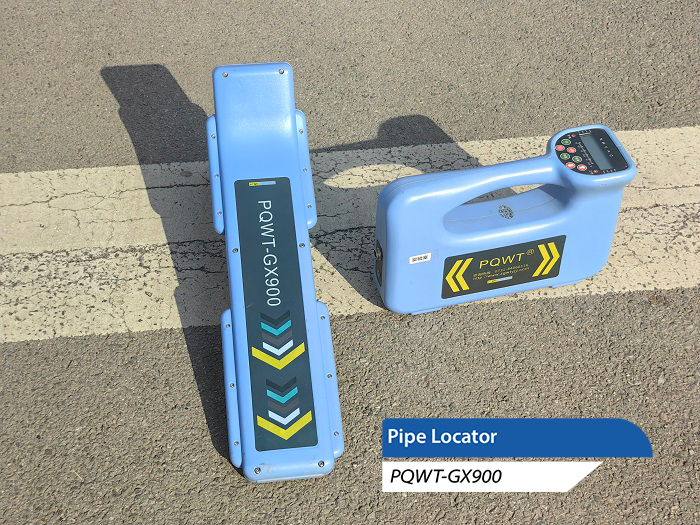PQWT Cable & Pipe Locator is an instrument that can quickly and accurately detect the location, direction, depth and pipe condition of underground pipelines without destroying the ground. It is widely used in water companies, gas companies, railway communications, municipal construction, industrial and mining, infrastructure units and other fields.

There are various types of underground pipelines, including water supply pipelines, drainage pipelines, communication pipelines, electric power pipelines, gas pipelines, heat pipelines and industrial pipelines. Different types of pipelines are managed and maintained by different specialized departments. In order to improve the quality and efficiency of underground pipeline detection, it is necessary to understand the types, specifications, materials and design and construction requirements of pipelines of different specialties, so as to choose suitable detection methods and instruments.
The main methods of underground pipeline detection include the following:
1. Direct method: This method detects pipelines by connecting one end of the transmitter of the PQWT Cable & Pipe Locator to the dew point of the pipeline, and the other end to the ground line, and applying alternating currents of specific frequencies. The receiver scans and receives the alternating electromagnetic field above the pipeline, realizing the positioning and depth determination of the pipeline. The direct method is characterized by strong signal output, good anti-interference performance, and high precision positioning and depth setting.
2. clamp method: when it is not possible to directly connect the transmitter signal on the pipeline under test, the clamp method can be used. When working, the transmitter signal is applied to the clamp, the clamp on the measured metal pipe line. The clamp is equivalent to the primary coil, the circuit formed between the pipe line and the earth is equivalent to the secondary coil. Through the clamp method can reduce the cross-interference, suitable for smaller diameter pipe line. 3.
3. Induction method: This method places the transmitter above the target pipeline and emits an alternating electromagnetic field of a specific frequency. The alternating electromagnetic field triggers an alternating current flow of the same frequency in the pipeline, and at the same time forms an alternating electromagnetic field around the pipeline. The receiver scans and receives this secondary field above the pipeline, realizing the positioning and depth setting of the pipeline.
4. Geological radar method: This method utilizes a pulse radar system that continuously transmits video pulses with a pulse width of a few milliseconds into the ground and receives the reflected electromagnetic pulse signals. By analyzing the received signals, the positioning and depth determination of pipelines can be achieved.
By using these underground pipeline detection methods, information on the location, direction, depth and condition of underground pipelines can be effectively detected, providing important reference data for the relevant departments in their renovation, maintenance and census work.








